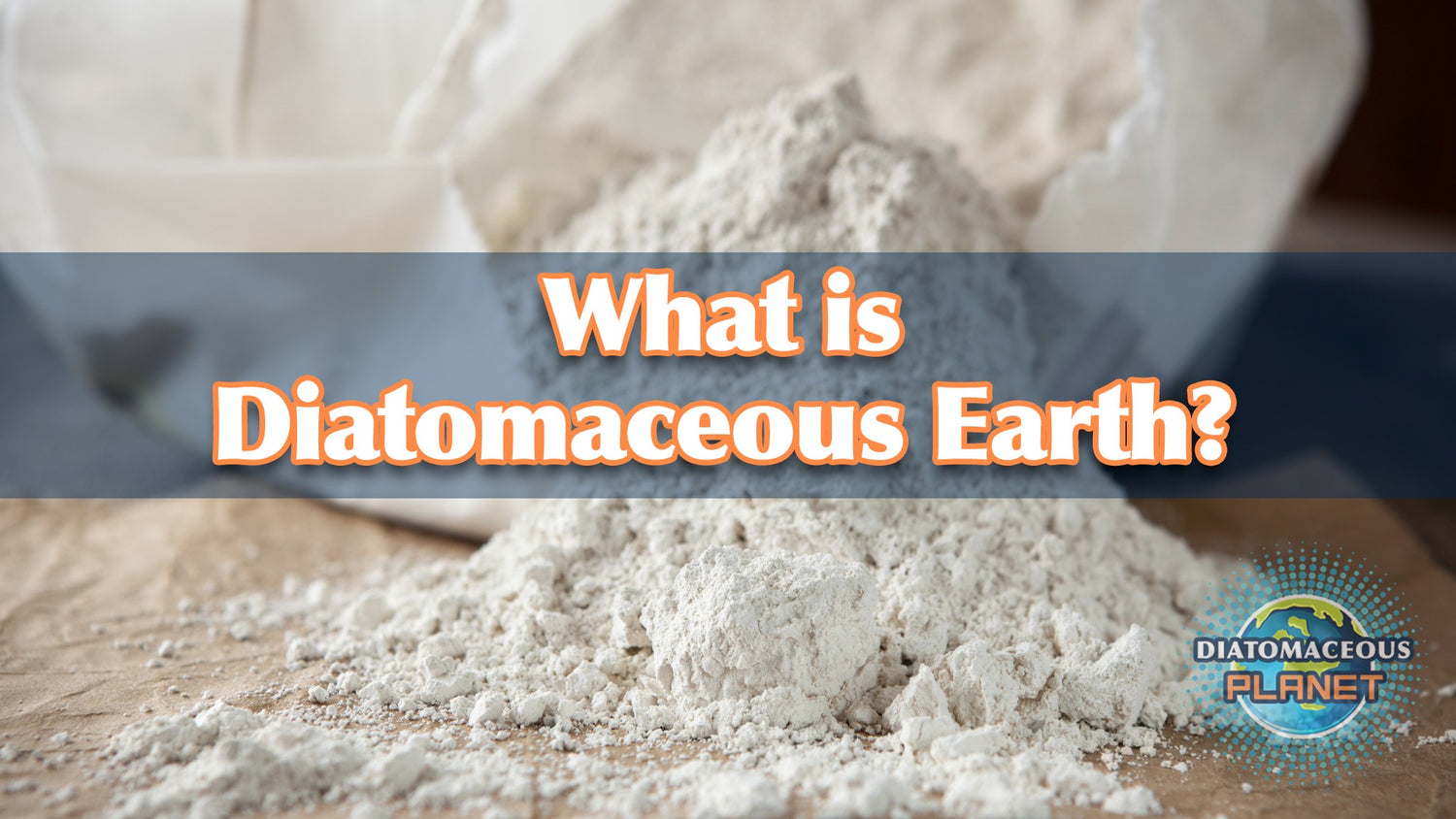Welcome to Diatomaceous Planet!
Our 100% Pure Diatomaceous Earth is quickly gaining popularity, because we've put quality and customer satisfaction first. We offer our customers: rapid shipping speeds, very competitive prices, honest support, and the highest quality product.
When you need Food Grade Diatomaceous Earth for your Home, Garden, Pets, Farm, or your own personal health - we have the safe and clean quality DE for your needs.
Diatomaceous Earth Product Sizes:
We Serve the BEST Earth, and by that we mean the highest quality Food Grade Diatomaceous Earth you will find in Canada. Along side our superior quality is our awesomely low shipping rates, starting as low as $7.49 for up to 6kg anywhere in Canada. Make your selection below when you're ready to Order Diatomaceous Earth online today.
-
Food Grade Diatomaceous Earth 1kg/2.2 lbs
Vendor:diatomaceousplanetRegular price $14.99 CADRegular priceUnit price per -
Food Grade Diatomaceous Earth 2kg/4.4 lbs
Vendor:diatomaceousplanetRegular price $19.99 CADRegular priceUnit price per$23.99 CADSale price $19.99 CADSale -
Case of Food Grade Diatomaceous Earth 1kg/2.2 lbs x7 (15 pounds)
Vendor:diatomaceousplanetRegular price $99.99 CADRegular priceUnit price per -
Case of Food Grade Diatomaceous Earth 2kg/4.4 lbs x9 (40 Pounds)
Vendor:diatomaceousplanetRegular price $159.99 CADRegular priceUnit price per
What is Diatomaceous Earth?
Diatomaceous Earth is a silky off-white powder, made of pure amorphous silica. The most popular kind of DE is called Food Grade, as its applications are nearly endless. Natural alternatives don't always work, however, Food Grade Diatomaceous Earth is exceptional, offering everyone reliable benefits.
Our enriched fossil powder, is made of trillions of tiny particles called frustules. These microscopic particles are actually the skeletal remains of living single-celled plants called Diatoms. While alive, diatoms live on the surface of oceans and lakes, and photosynthesis to survive, just like all other plants. Forming large algae patches, living diatoms are often called phytoplankton, and serve as the essential building blocks of Earth's food chain.
What makes diatoms so unique, is not just their position in the circle of life, but more so there cellular composition. These special plants have a silica-based cell wall, instead of most other plants which are carbon based. What this means, is after the diatom finishes its life cycle, it dies and leaves behind a siliceous skeleton. Later this silica shell becomes fossilized over time, creating a nearly indestructible particle, with a very complex geometric structure.
Food Grade Diatomaceous Earth has become a reliable natural alternative, solely because of its unique physical composition. Each porous particle is composed of rock form (amorphous) silica. The absorbent qualities, coupled with the strong elemental charge from silica, is what makes it a real life changing discovery.
We offer even more detail about diatoms, diatomite, fossilized diatoms, freshwater reservoirs, why Food Grade is so important, and even more details including the differences between amorphous silica and crystalline silica... Learn more on our What is Diatomaceous Earth page.
Diatomaceous Earth Uses
Our DE is specially ready for farmers to use it in a variety of ways. This includes the most popular use, which is a feed supplement. To including also the array of other uses including controlling odours, an anti-caking agent for flowing issues, or an absorbent for waste spills.
DE has certainly made its mark in industry. The largest industry for food grade DE is the filtration industry (by far). Common products like beer and wine are largely dependent now on requiring DE for proper production, requiring massive industries to support them. Thankfully our supply chain is focused on agriculture, homesteading, gardening, pets, and people. We aim to reach an end-user audience with our pure and natural Food Grade Diatomaceous Earth.
Take a look at our Diatomaceous Earth Uses page, where we cover in depth about how DE is used as a functional food additive, more about adding it to feeds, and even more interesting uses; this is a real natural alternative!
Diatomaceous Earth for Pets
One of the most popular ways to use Diatomaceous Earth, is with Pets. When added to your pets food, there are many positive health effects that continue to prove reliable and beneficial. We’re here to help you reflect on your research, and find the right fit for your pet's healthy diet.
Food Grade DE offers common pets of many kinds endless benefits. That includes proper dosage and diet recommendations. Our DE can help your Dog, Cat, Rodent, or Farm Animals.
Learn more about Diatomaceous Earth for Pets, where we go into more details to help you with your personal research.
Diatomaceous Earth for People
When it comes to people using Diatomaceous Earth, the trend is certainly upward in terms of health benefits. In this case, we are meaning to detox or chelate. Even popular medically reputable website are discussing how to use Diatomaceous Earth (human use).
There is a lot of excitement over the years as Food Grade DE has grown and grown in popularity for it’s amazing and reliable effects. First it started with livestock, then pets, and then from there we are on a trajectory where the health audiences are noticing more and more what makes it such a unique and natural product.
For example, taking Food Grade Diatomaceous Earth for improved hair, skin, and nails is something beginning to spread on social media and the internet at large. We can assure all our customers that our Brand of Food Grade Diatomaceous Earth is the safest you will find.
We source our product knowing we are serving a versatile range of product uses. For people, we have ensured we carry only the safest Food Grade DE.
Learn more details about using Diatomaceous Earth for People.
Wholesale & Bulk Food Grade DE
We also have a wholesale and dropshipping program. This is designed especially for retail outlets across Canada and the USA who would like to stock our Food Grade Diatomaceous Earth.
We offer great prices, flexible pricing, volume discounts, and fast shipping. All included, with our friendly Canadian customer support.
If you are a hardware, healthfood, or pet store in Canada, it's time you carry the best Diatomaceous Earth. Learn how we can become your bulk Diatomaceous Earth Supplier here...
Shop Online for Food Grade DE
Our Food Grade Diatomaceous Earth is a product that belongs in every home. Shop here for the best quality DE you can find online. We offer rapid shipping across Canada and USA. Place your order online today!













